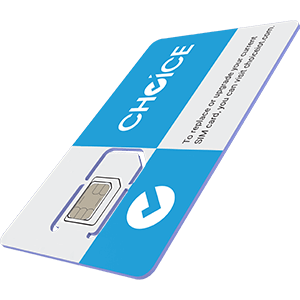Unleashing the Future of the IoT with Next-Gen SIM Cards
The Internet of Things (IoT) is poised to revolutionize our lives like never before. But to enable the connected world of tomorrow, we need the right technology today. This is where next-generation SIM cards come in. These tiny but powerful devices can unlock the true potential of the IoT and enable us to experience the connected world of the future. With the help of these IoT SIM cards, we can be one step closer to the dream of a truly connected world, one that brings us together and transforms the way we live, work, and play. Let’s explore the exciting possibilities of the IoT with these amazing SIM cards!
The Future of the IoT SIM Card
The future of IoT is brighter than ever, with next-gen SIM cards poised to take the industry by storm. As we enter a new era of technology, it’s essential to consider the role of SIM cards in enabling the IoT’s exponential growth.
Looking forward, the possibilities are endless. With 5G networks emerging, IoT devices will have faster connectivity and reduced latency, enabling near-instantaneous data transfer and better overall performance. This advancement is crucial in today’s data-driven world, where time is of the essence.
In addition, the eSIM technology is playing a vital role in unleashing the potential of IoT. Unlike traditional IoT SIM cards, which are removable, eSIMs are integrated into the device, making them more convenient and durable. They are programmable, which means users can add or switch service providers easily. The integration of eSIM technology will make it possible for the IoT industry to grow even more rapidly.
There are numerous benefits of an eSIM for IoT devices. They are more secure and reliable, with more features than traditional SIMs, including over-the-air programming and subscription management. They also take up less space, making them perfect for small devices with limited space.
Despite the many benefits of eSIMs, their implementation poses significant challenges. For one, they are a new technology, so not everyone knows how to use them yet. Second, the development of the necessary software to manage them is not easy. But with companies investing more in the IoT and eSIM technology, it won’t be long before these challenges are overcome.

The Challenges of Implementing an eSIM for IoT
As we look to the future of the IoT, the implementation of eSIM technology will be critical in unlocking the full potential of connected devices. However, there are several challenges that need to be addressed in order to fully realize the benefits of this next-generation SIM card.
One of the biggest challenges is ensuring interoperability and standardization across different networks and devices. With traditional SIM cards, there is a clear standardization in terms of form factor and functionality. However, with eSIMs, there are several competing standards and protocols, which can create confusion and fragmentation in the market. This can lead to compatibility issues and a lack of interoperability between devices from different manufacturers and service providers.
Another challenge is security and data privacy. With eSIMs, there is a greater risk of cyber attacks and hacking due to the increased connectivity and interactivity of connected devices. Ensuring that these devices are secure and protected from potential threats will require robust security protocols and encryption measures.
Moreover, eSIMs will require significant investment and infrastructure in order to support the new technology. This will require manufacturers and service providers to invest in upgrading their networks and systems to support eSIMs, which may prove to be a costly and time-consuming process.
Despite these challenges, the potential benefits of eSIMs for IoT devices are too significant to ignore. As we continue to see the rapid growth of connected devices, eSIM technology will become increasingly important in enabling these devices to communicate with each other and the wider world. By overcoming these challenges, we can create a more connected and sustainable future for all.
Conclusion
As we wrap up our discussion on the future of IoT SIM cards, one thing is clear – we are entering an era of endless possibilities. The Internet of Things is revolutionizing the way we interact with the world around us, and with the emergence of eSIM technology, it’s only a matter of time before every device is connected to the internet.
From smart homes to self-driving cars, eSIMs are already being used to power a wide range of innovative products and services. As this technology continues to evolve, we can expect to see even more exciting use cases emerge.
Of course, with any new technology, there are challenges that must be overcome. Security concerns and the need for seamless integration with existing infrastructure are just a few of the obstacles that must be addressed.
Despite these challenges, however, it’s clear that the benefits of eSIMs for IoT devices are too great to ignore. By eliminating the need for physical SIM cards and enabling remote provisioning and management, eSIMs offer unparalleled flexibility and convenience.
As we look to the future, one thing is certain – the IoT is only going to become more pervasive and impactful. Whether you’re a consumer, a business owner, or a developer, it’s time to embrace this brave new world and start thinking about how you can leverage eSIMs to unleash the full potential of the IoT. So what are you waiting for? Let’s get connected!
